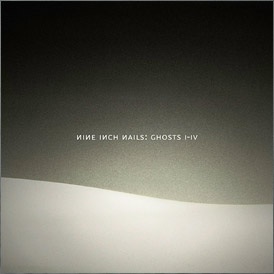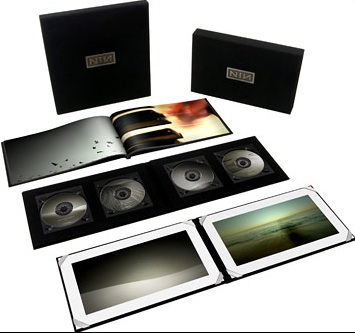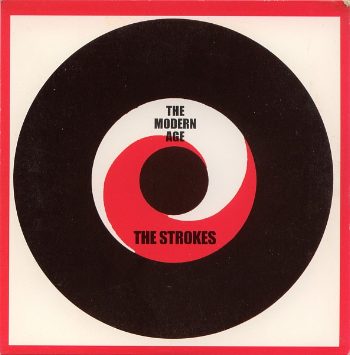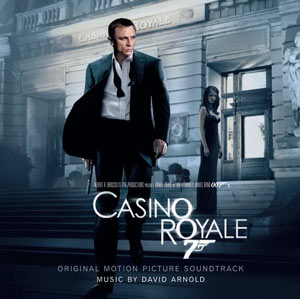
Halo 26, Ghosts I-IV has just been announced at the nine inch nails website. It’s a collection of 36 instrumental tracks created with no clear agenda, with the entire process being driven by impulse and improvisation.
Of it, Trent says:
We began improvising and let the music decide the direction. Eyes were closed, hands played instruments and it began. Within a matter of days it became clear we were on to something, and a lot of material began appearing. What we thought could be a five song EP became much more. I invited some friends over to join in and we all enjoyed the process of collaborating on this.
Nine Inch Nails takes the Radiohead gambit a step further with this release, offering multiple formats and ordering options. All songs are available immediately for download from Amazon MP3 and nin.com:
- Ghosts volume I (9 tracks) is a completely free download.
- All 36 tracks can be downloaded for $5. Provided formats: 320kbps mp3, FLAC lossless and Apple Lossless. Also comes with a 40-page pdf. Paypal is an option for payment, if you want to avoid using credit/debit cards.
- For $10, you can get 2 physical cds shipped on April 8 as well as immediate access to the downloads.
- $75 gets you the 2 audio cds, a data dvd with multi-track files for remixing, 2 Blu-Ray disc with high-definition 96/24 stereo tracks and visual slide show all bound in a hard-bound slipcase. Also comes with 48-page photographic accompaniment book. You also get access to all the downloadable materials. Ships May 1.
- And for the true nin spendthrift, there’s the $300 Limited Edition (limited to 2500 numbered copies). You get everything in the $75 package, plus four vinyl LPs, Glicee prints, and Trent Reznor’s signature. Ships May1, but of course, you get the downloads now.

Ghosts I-IV Limited Edition
I’m actively reducing the amount of physical clutter in my house. So as a devotee of digital formats, I’ll probably opt for the $5 version. Apple Lossless is a pretty nice format. Though I expect the NIN online store to be crushed by the demand for the next day or so. If mp3s are your thing, Amazon might be the way to go. You still get all 36 tracks for $5.
UPDATE: store.nin.com is pretty much DOA right now. I’ve actually managed to make a transaction, but the download failed after 100kB. So I’ll have to talk to customer service, since the store is providing “one-time download links.”
UPDATE II: Trent writes at nin.com from Hong Kong:
The response to this album has been overwhelming, causing our website to slow to a crawl. We THOUGHT we were ready, but… We’ve been adding more servers to accommodate the unexpected demand and we expect to be running smoothly in the next few hours. In the meantime, if you’ve had any problems with downloads from the Ghosts site, don’t worry – you’ll be able to use your download link again when the site is more stable.
Good to know the early adopters won’t be left in the proverbial cold.
UPDATE III: 24 hours later and the site is humming along nicely. Either the added servers are handling the crush well or demand has slowed or both. I had no trouble using my original download link to retreive the Apple Lossless + bonus files (more than 600 MB), which transfered without any hang ups.
Review
The 36 songs range in length from 1:53 to 5:52 and total a running time of 1 hour 50 minutes. For comparison’s sake, both discs from The Fragile run 1 hour 46 minutes.
My initial impression after a couple listens is that Ghosts I-IV is a series of tone poems that don’t necessarily have any connection to each other. Nine Inch Nails records tend to have a certain “flow” to them that’s largely missing here. Instead, we have, as the album name would suggest, is borderless apparitions of sound and space. Many tracks stop suddenly, like a figment seen in the corner of one’s view that disappears when looked at directly, while others fade away or into the next track.
Stylistically the sound is unmistakeably Nine Inch Nails and the overall feel has more in common with the dark ambient tendrils of Trent’s soundtrack for the Quake computer game and The Fragile (think The Frail) than the apocalyptic paranoia of Year Zero. There is, however, some new ground here. I Ghosts 6 is borderline playful in its demeanor, a quality not usually associated with Nine Inch Nails’ music.
Ghosts has all the qualities of great instrumental music. It works well as background, as white noise with which to block out the world or drift away, but upon close inspection reveals remarkable textures and attention to detail.
But in typical fashion, Ghosts is more than just a listening experience. Each of the 36 songs has its own unique album art, snapshots to accompany the music.
Ghosts is Nine Inch Nails’ first release since the band was freed from its recording contract with Universal last October and its good to see that it is wasting very little time taking advantage of the new-found freedom and utilizing new media and techologies to promote, sell and circulate the music. There’s absolutely no way a record company would have released a double-disc set of what is a essentially musical diversions. And certainly not for a $5 download.
But Trent’s free agent status allows him to do whatever he wants. He can give this thing away, which he actually did: All 36 tracks are released under a Creative Commons license: Attribution Non-Commercial Share Alike, meaning that anyone can give away the albums or use the songs as part of any non-commercial project so long as they credit NIN.
Trent says that there will likely be further editions in the Ghosts series. I, for one, will be looking forward to the music and future releases using the model.



